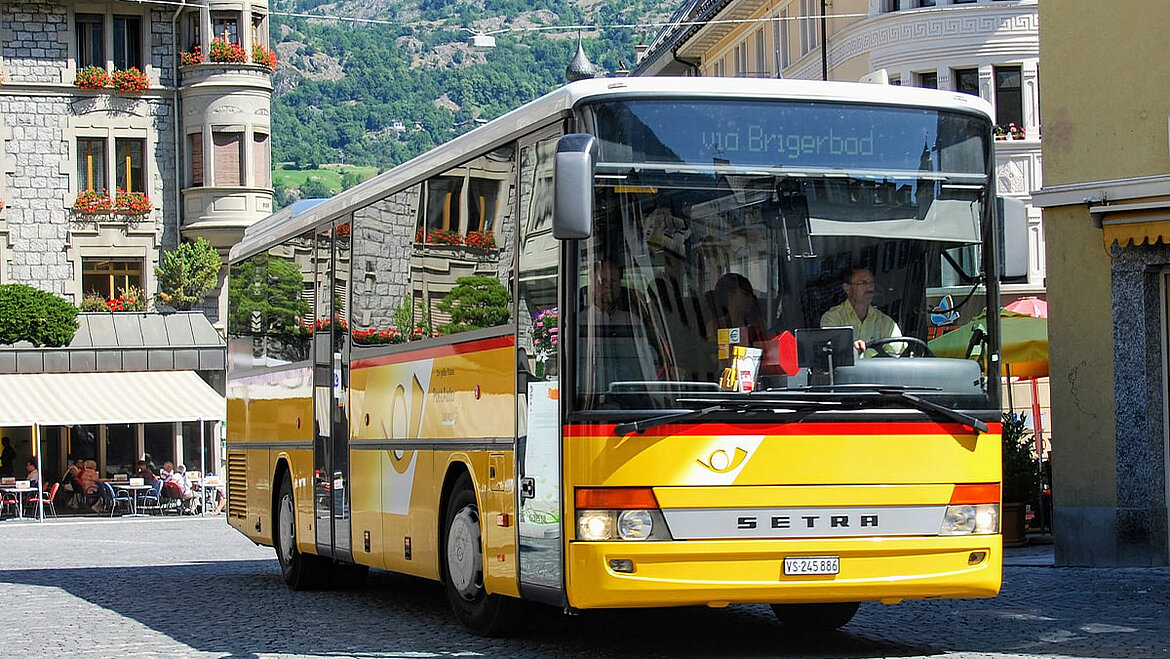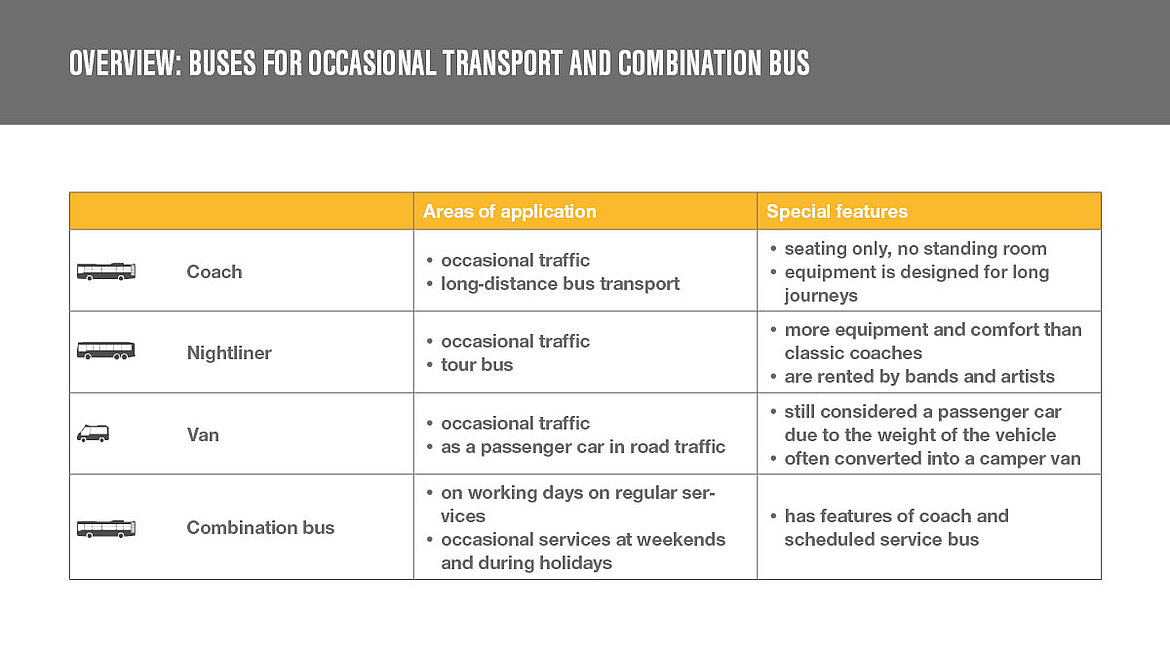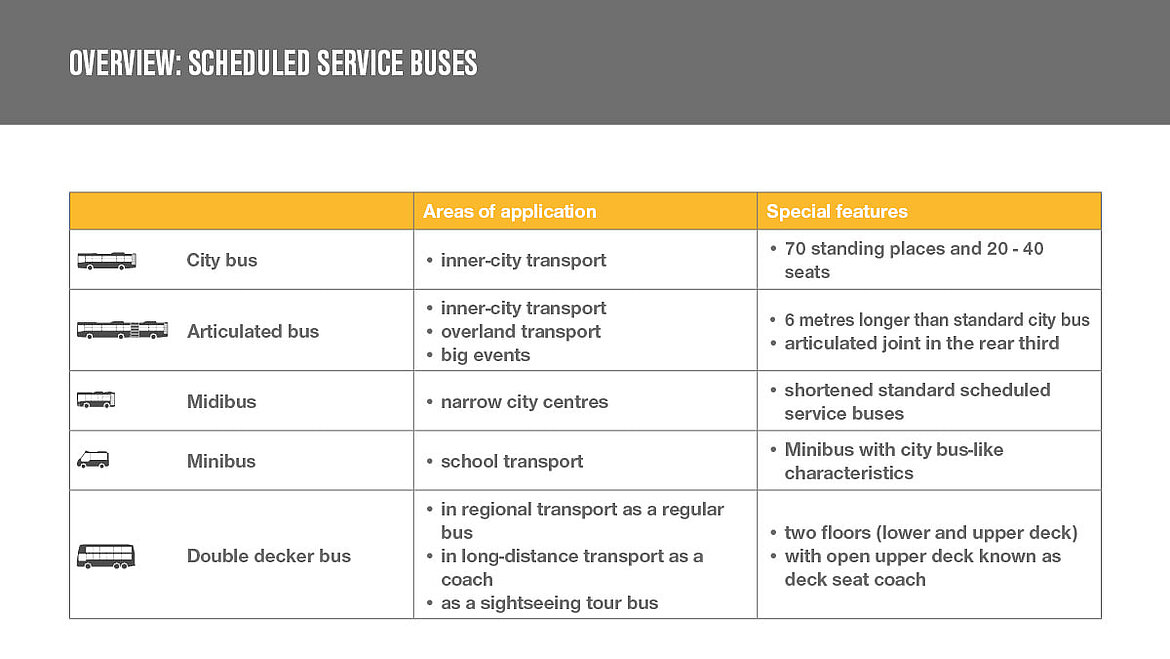A longer journey, a weekend trip or commuting to work. All of these trips can be made easily and comfortably by bus. Your own car stops at home and the driving time can be used for other things such as working, listening to music, reading or talking. Incidentally, travelling by bus is also even more climate-friendly and safer than by car. In the following, we provide an overview of the various bus types. In principle, a distinction is made between scheduled service buses and occasional service buses.
1. Scheduled service buses
City bus
City buses are specially designed for regular inner-city transport. The typical twelve-metre city bus is equipped with 70 standing spaces, around 20 to 40 seats and enables passengers to alight or board quickly at the stops.
They provide space for luggage, bicycles or pushchairs and are also suitable for wheelchair users due to their low entry height and extendable ramps.
LED or matrix displays inside and on the rear, side and front windows indicate the destination.
Midibus
Midibuses are scheduled service buses that come in two different sizes – 8 metres long and 10 metres long. The latter are shortened standard scheduled service buses that have around two rows of seats less in the middle and otherwise are no different in design to “normal” city buses.
The smaller midi buses are specially designed as such.
At between 2.30 and 2.45 metres wide, they are narrower than standard scheduled service buses and can therefore be used on secondary roads or in narrow inner cities.
Both midibus variants are similar in appearance and design to the standard city buses of the respective manufacturers.
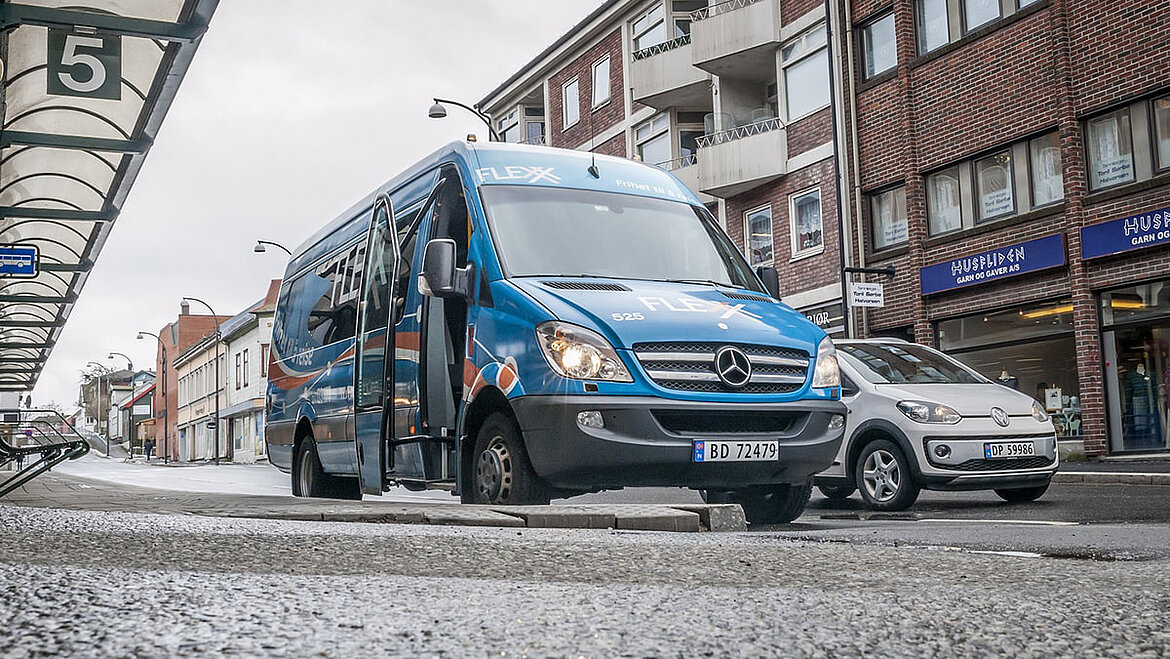
Minibus
Minibuses are vans with more than nine seats. Their area of application, outside of large cities, is mainly school transport. In smaller cities, however, they are also suitable for shopping, leisure and commuting.
Small buses with city bus features, i.e. low-floor, 12–30 seats and more space for luggage, are mainly used as call buses or as accessible large-capacity taxis.
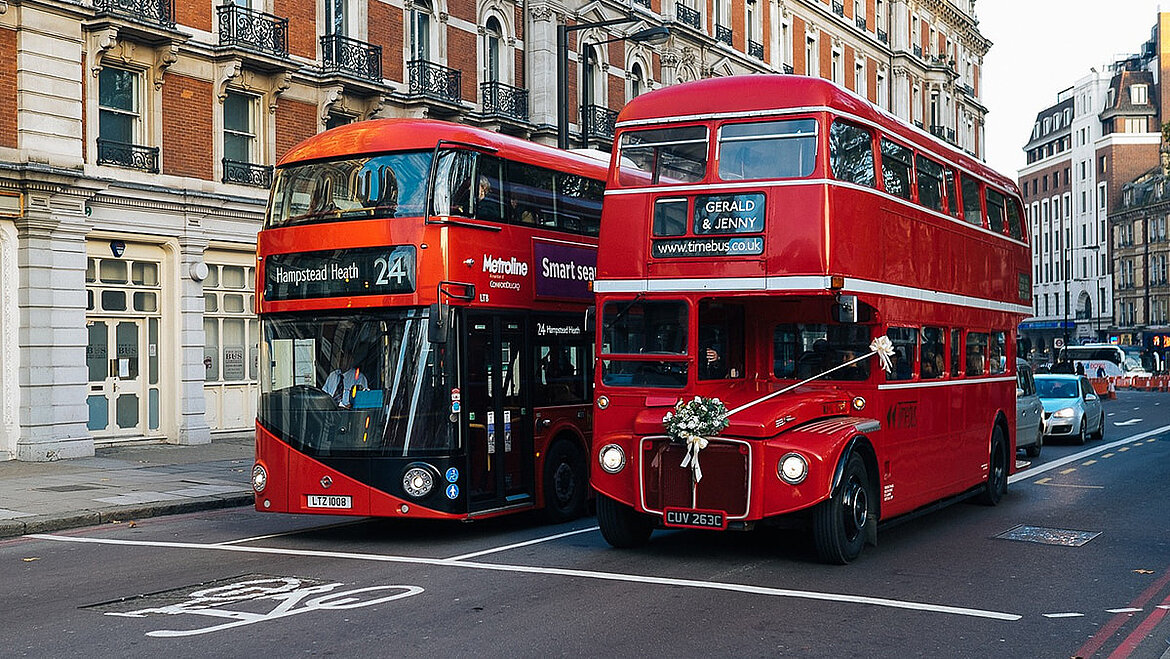
Double decker bus
As the name suggests, double decker buses have two floors and are mainly used in bus tourism. Up to 90 passengers can be chauffeured on the lower and upper decks. If the upper deck is open, the bus is called an open-top bus.
Double decker buses are sometimes used as scheduled service buses for regional transport, often as coaches in long haul transport and as sightseeing tour buses in large cities.
Articulated bus
Articulated buses, also known as accordion buses, are especially designed for high passenger volumes. At 18 metres, they are 6 metres longer than standard city buses and, in addition to regular urban transport, are often also used in intercity transport or at large events such as trade fairs or sports events. Three entry options are common. Despite their length, articulated buses can also travel on narrow roads. This is made possible by the articulated joint located in the rear third.

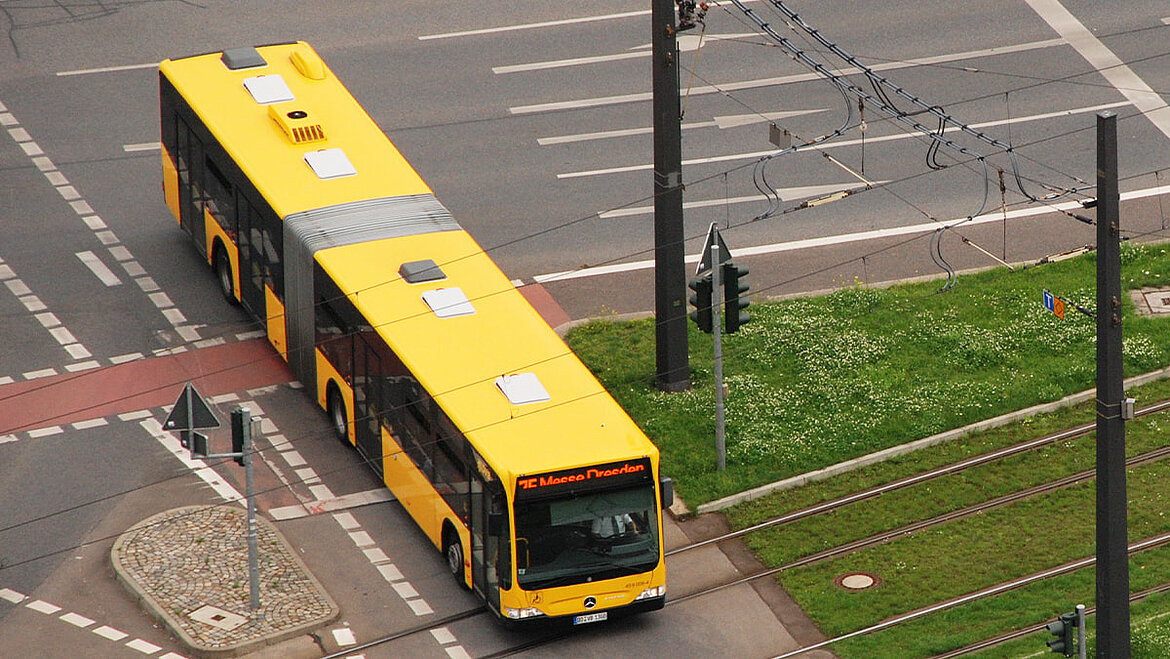
2. Buses for occasional transport
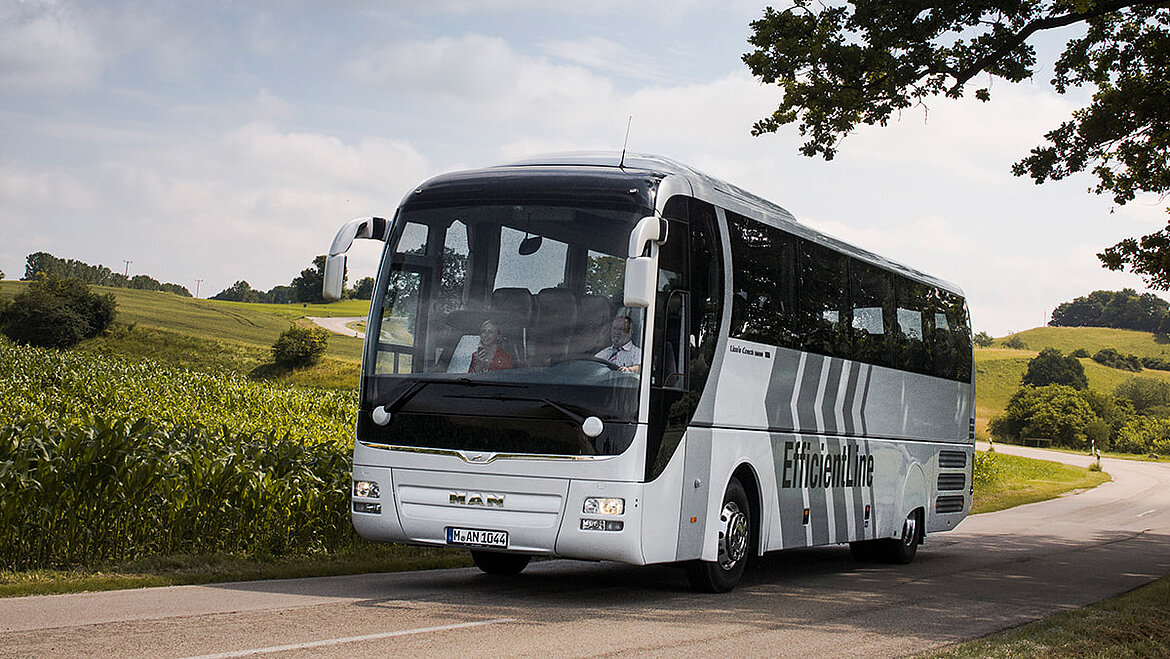
Coach
Unlike scheduled service buses, coaches have only seats and are therefore only built for the transportation of 30 to 60 seated passengers. Double decker coaches can carry 70 people or more. Compared with city buses, their equipment is also designed for long journeys.
Head restraints, drinks holders, folding tables, WC, luggage compartments in the floor of the bus, stowage compartments for hand luggage or seat belts are just a few of the features included in traditional coaches.
The Quality Association for Bus Comfort e. V. has classified coaches in Germany with a star system, which is dependent upon the distance between seats in the longitudinal direction and other comfort criteria. A distinction is made between Standard Class*, Tourist Class **, Comfort Class ***, First Class **** and Luxury Class *****.

Nightliner
In contrast to classic coaches, Nightliners offer significantly more equipment and comfort. They are therefore mainly rented by bands or ensembles to bring artists and crew to the various venues during a tour. In addition to the seats, Nightliners also have a couch, kitchen, bathroom and berths and thus serve as a rolling hotel.
As a rule, these buses also have modern sound and entertainment systems, an Internet connection, a TV and a coffee machine. Like coaches, the Nightliner is also available as a single or double decker variant.
Of course, comfort and luxury equipment also varies depending on the provider.
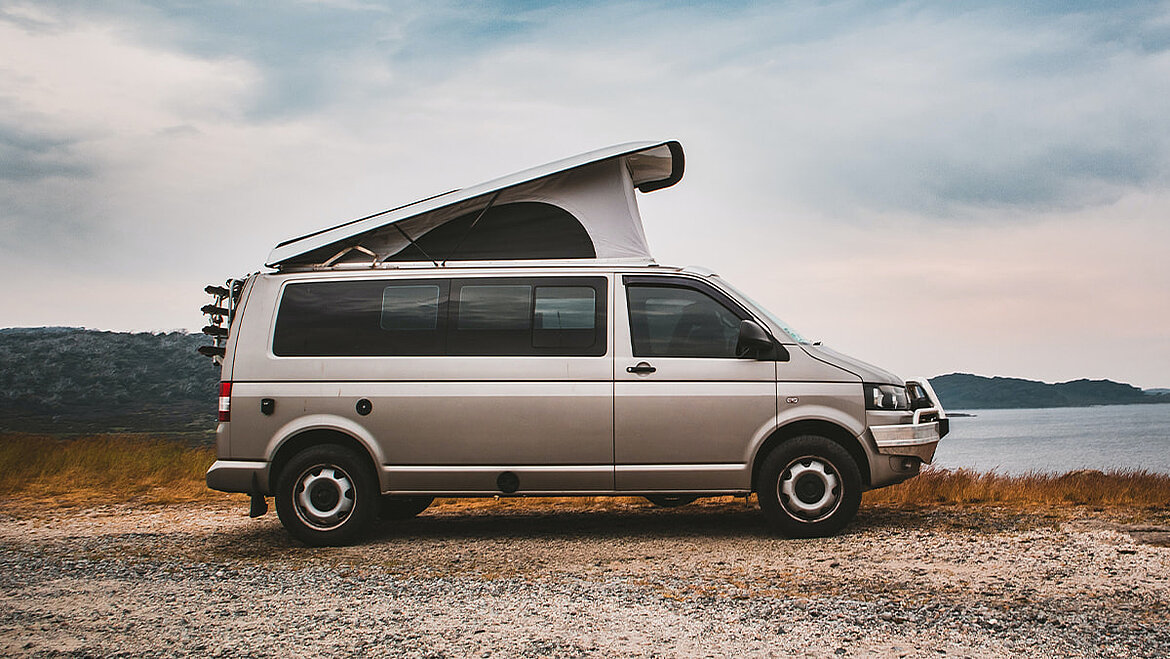
Minibus
With the introduction of the VW bus in the 50s, the term minibus, i.e. vans with windows, was born in Germany. This type of bus makes it possible to transport up to 9 people, including the driver.
Due to this and the weight of the vehicle, the minibus is still considered a car and can be driven with a normal class B driving licence. Buses of this type are often upgraded and converted into camper vans.
We have compiled an overview of motorhomes and what you should bear in mind when purchasing them here.
3. Combination buses

A major challenge is the design of a combination service bus, also known as a double-earner, which is used in both scheduled service and occasional services. The requirements of coaches and scheduled service buses must therefore be combined.
As these buses are used in regular service on working days, they have wider entrances and aisles and have a destination display and stop request buttons.
Combination buses are used for excursions during holidays and weekends and therefore require many comfortable seats, luggage racks and a large luggage compartment in the floor.
Basically the following applies: Regardless of the type of bus, passenger safety is paramount. But of course, passengers should also feel comfortable whilst travelling. This can be ensured by an attractive interior design. GRP is particularly suitable for the interior design of a bus. Multifunctional fibre-reinforced composites not provide a range of visual effects for the interior, i.e. individual decors and fabric variants, they also ensure that no condensation penetrates into the material structure. Thanks to their pore-free surface, they are also easy to clean and are also pressure and impact-resistant. We recommend LAMILUX LAMIGraph and LAMILUX LAMIfoamtex for the interior side walls.
LAMILUX Composite Floor coverings are also available in a wide range of design options. When installed in the entrance area and aisle of the bus, it also offers passengers protection against slipping in wet conditions. LAMILUX Anti Slip floor coverings also have an anti-slip feature, which is often used in luggage compartments. It ensures that bags and suitcases do not slide around and therefore neither the contents nor the bus are damaged.
Overview types of buses
Advantages over other modes of transport
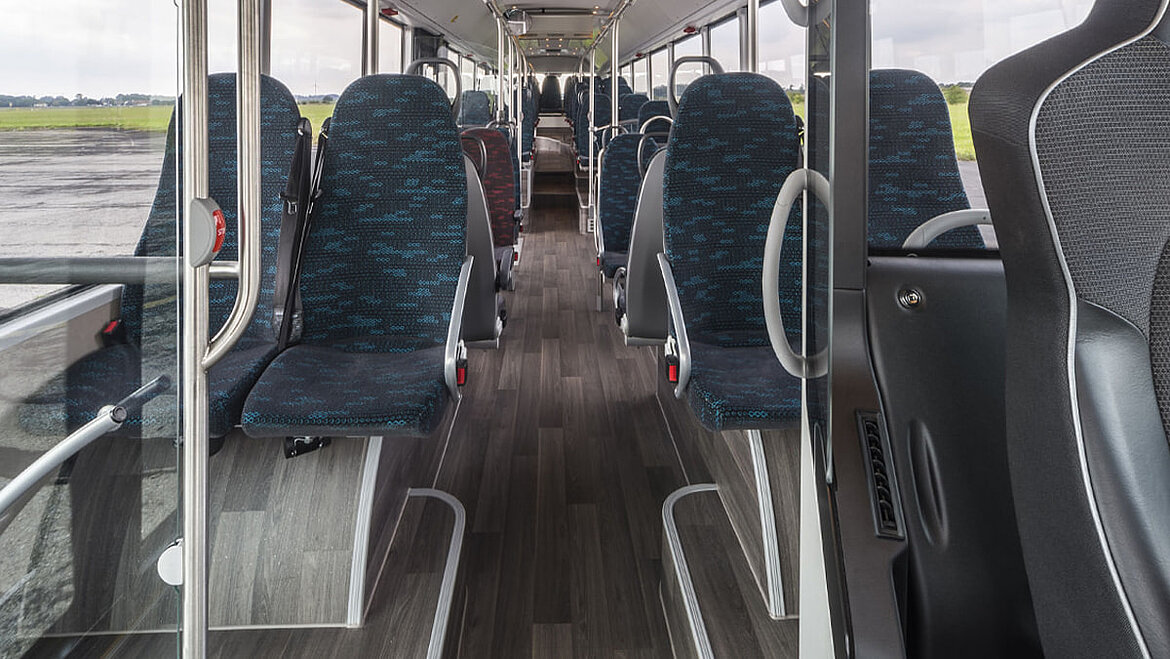
The bus is more environmentally friendly and economical than other means of transport such as aeroplanes or cars.
It offers space for many people at the same time, thereby creating significantly less CO2 emissions than would be created by the use of cars by these people.
On the road, a bus replaces around 30 cars, so the raw materials are also used much more effectively – a fully occupied scheduled service bus requires much less diesel per person than a car occupied by just one person.
According to the Federal Environment Agency, the bus is therefore the most ecological means of transport with an outstanding environmental balance.
As a basic principle, the lighter the bus, regardless of whether it is used for regular or occasional transport, the lower the fuel consumption and the more climate-friendly the means of transport becomes. Weight savings can be made in buses by installing GRP in both the roof and outer wall. This material also has other advantages. in roof applications, it has a high tensile strength and is UV and weatherproof. Our favourite composite is LAMILUX Woven Roving Gelcoat 48% SH.
Installed as exterior side walls, glass fibre-reinforced composites offer a wide range of colours, ensure glossy surfaces and make them able to withstand frontal forces. Our favourite composite for the outer wall is: LAMILUX High Strength X-treme. In order to further increase climate protection in bus transport, e-mobility and innovative technology are now being used more and more in local public transport. In Upper Franconia, for example, in Hof, Kronach, Bad Steben and Rehau, the headquarters of LAMILUX Composites GmbH, six highly automated, driverless electric minibuses have been operating in public transport areas since 2021 as part of the Shuttle-Modellregion-Oberfranken project. The aim of this project is to conduct leading research in the area of autonomous driving and CO2 reduction.

Buses are economical and climate-friendly
On today's roads, there are numerous variants of buses that are used in both scheduled service and occasional services. Buses are not only very safe means of transport, they are also particularly economical and climate-friendly.
Regardless of the type of bus, GRP is installed in the design, and buses of all kinds are more able to withstand the challenges of everyday life and are more economical and climate-friendly due to their lighter weight.
For even more environmental protection, the aim is to focus on more e-mobility in the inner-city bus sector in the future.


